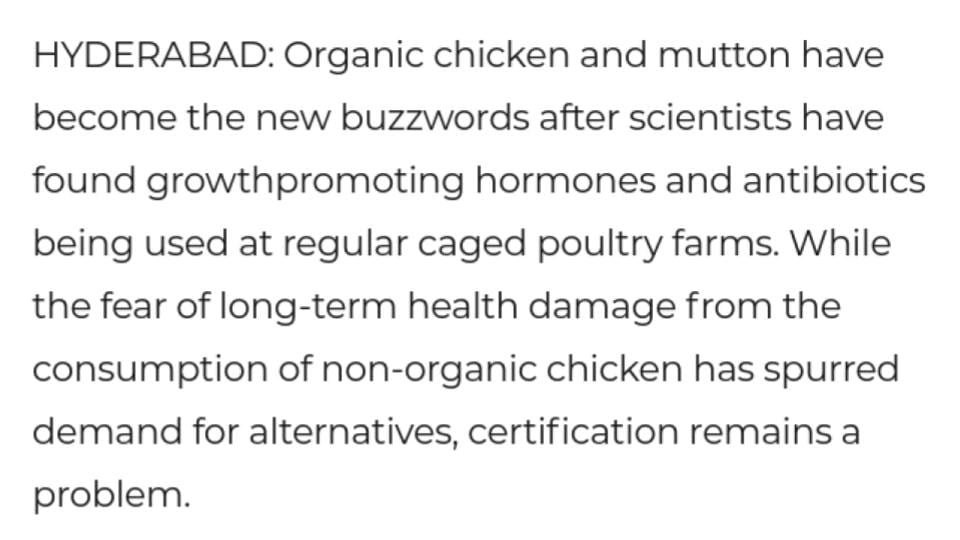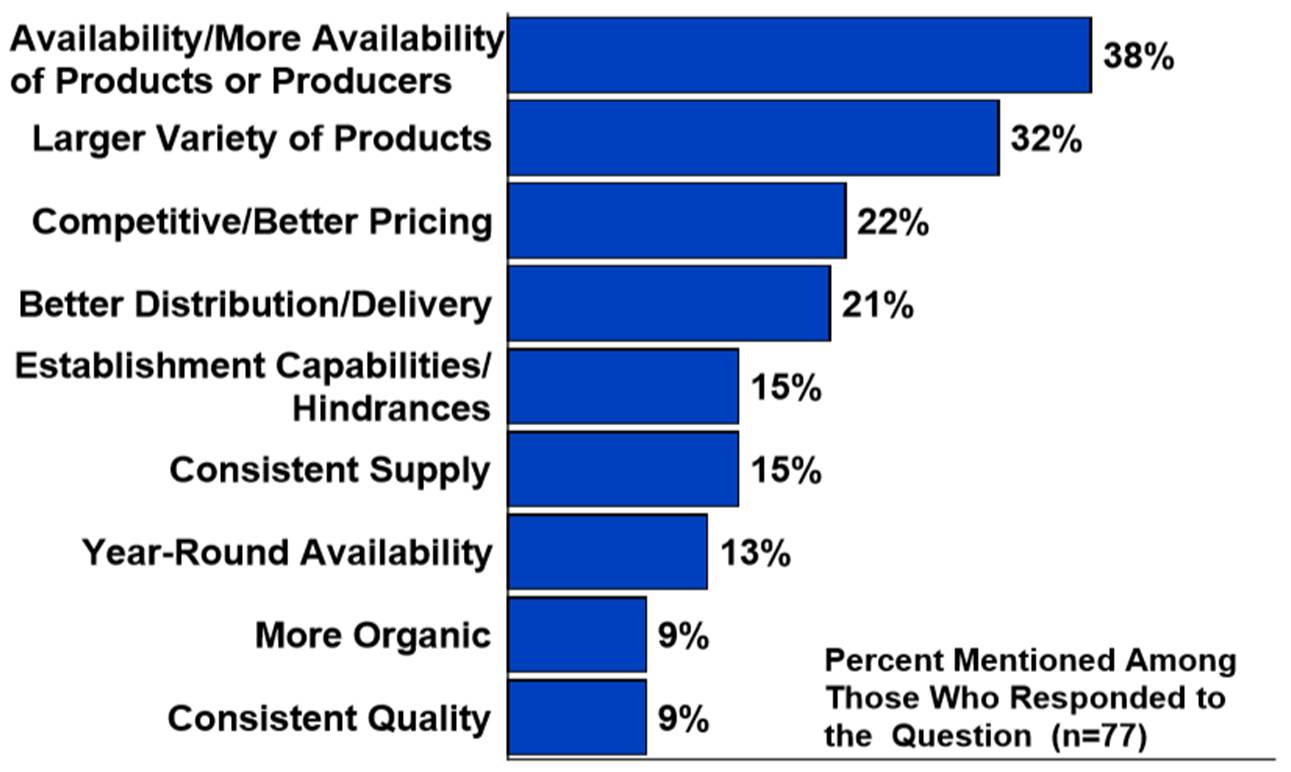What poultry farm value proposition should be considered when selling?
Value is THE commercial motivator for driving the deal.
Value plays on the fact that there is something that the customer already is willing to pay for.
All you have to do come up with beat the alternatives by some way.
But how can your poultry farm business successfully propose this best value concept?
There are two simple(-ish) ways to beat the value offered by your peers.
- Understand what and why your customer value what they already buy.
- Devise a product/service offering which provides greater value.
- Attach complementary a price tag that makes sense.
Simple in the sense that anyone can do this. But not so simple to execute precisely.
Pro tip: business owners often think that to offer better value to customers they have to be cheaper.
This is VERY flawed thinking. In most cases, this completely back fires and decimates your product sales.
The key with getting traction with sales (getting them to buy) is that you:
- understood what they are looking for, and;
- have met them there…
- presenting a much considered price
In many cases (counter to intuition), actually raising the price with an improved value proposition can boost sales.
It all comes down to your ability to listen, interpret and communicate.
And what protection can you provide for your poultry farm that this value can’t be copied?
There’s always that threat of copy cats.
In every industry, there will be those who simply want to replicate your value, than want to add.
But adding value will always be steps ahead.
In saying that, I’ve kind of given away the answer here…
To protect your poultry farm from mimicry simply be dedicated to ALWAYS being a value raiser.
Listen more.
Learn more.
Know more.
Understand more.
Give more value.
This attitude and way of marketing will never be beaten if you work at it.
Why?
You become the expert.
The authority in your space.
You gain the trust.
They always come to you.
Example
Product USP
“[Senthilvela has] … resolved to avoid antibiotics or vaccines on the chicken and rear only country breeds.” (Source: The Weekend Leader)
(Source: India Times)
Senthilvela is right on trend.
Growth markets present great opportunity for start-ups.
Why?
Emerging trends speak of uncharted territory. Open for venture from all-comers.
Especially as yet, the barriers to entry are quite low as certification & regulation of product is still undecided for the domestic market.
This means new entrants like Senthilvela can participate with very little in the way of hurdles to clear.
(Aside from capital, of course.)
He has chosen to participate in the organic chicken market with a strict no antibiotics and no vaccines policy.
Intensive poultry businesses just aren’t geared up to deliver this.
Giving way to the small producers to come together and concentrate their collective bargaining power.
Senthilvela mentions his intentions of starting a cooperative (using his farm as the HQ), to fulfil bulk chicken and egg orders.
He clearly has ‘achieving scale’ in his sights.
Local breed(s) focus
“Senthilvela breeds four varieties of [native] chicken…” (Source: The Weekend Leader)
Our case study subject, Senthilvela, has a focus on a variety of local chicken breeds.
Not just one.
There are many organic farmers who are specialising in one breed, or another.
Some saying Rainbow chicken is the future:
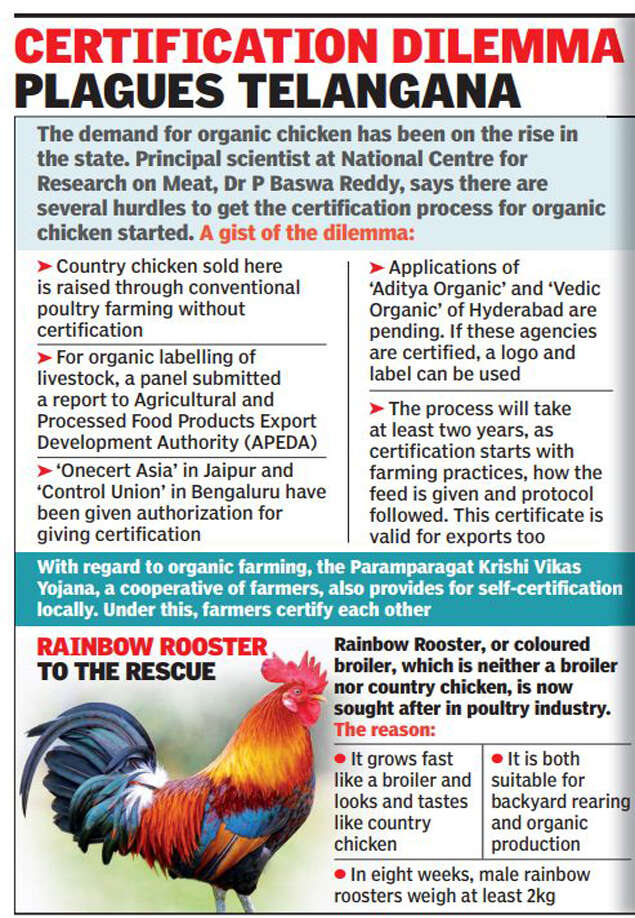
(Source: India Times)
…whilst others are Kadaknath-only production centres:
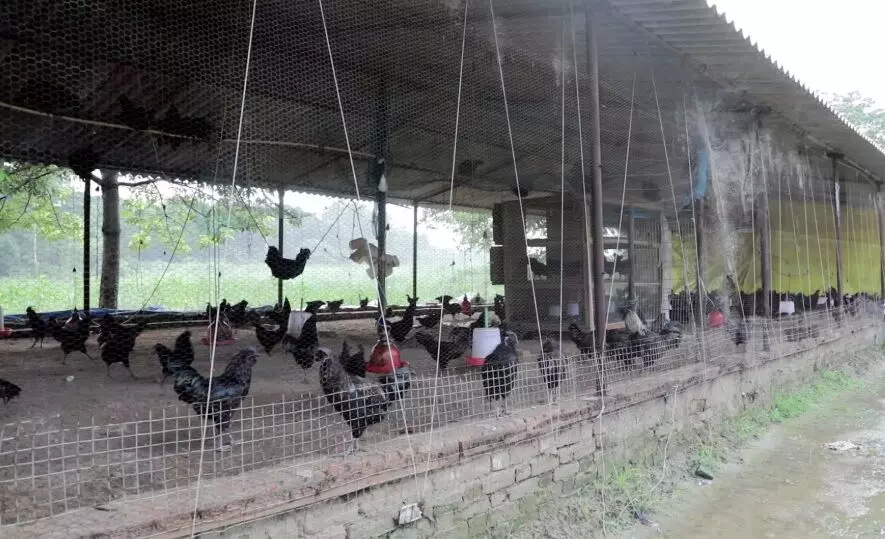
(Source: https://www.gaonconnection.com/)
Whilst catering professionals in all major markets are rooting for their local producers (and see HUGE commercial benefit for localising their supply)…
“The world over, chefs, nutritionists and food activists are all rooting for #eatlocal. This includes grains, dairy products and meat products. In India, a quiet but determined movement has begun in homes and restaurants — a return to country chicken.” (Source:The Hindu)
One of the major hold ups for ploughing more budget into local produce is simply the lack of choice.
This survey taken of chefs in the US, for example, echoes this cry for variety of organic products:
(Source: Smallholdings For Sale)
Senthilvela’s strategy of spanning many varieties of local breeds is right on the demand button.
Centre of excellence
“Senthilvela’s farm is recognised as a Model Farm by Tamil Nadu University of Veterinary & Animal Sciences (TANUVAS)…” (Source: The Weekend Leader)
Senthilvela has a cooperative poultry farming model on his mind.
To pull this off properly, he’ll need to convince his peers that he has the credentials to get them ahead.
So, getting the thumbs up from a renowned Uni and Vet Sciences establishment like TANUVAS will certainly help.
Also, official recognition of his product’s authenticity of organic origin would add consumer appeal.
However, India is as yet without a domestic organic poultry certification mark:
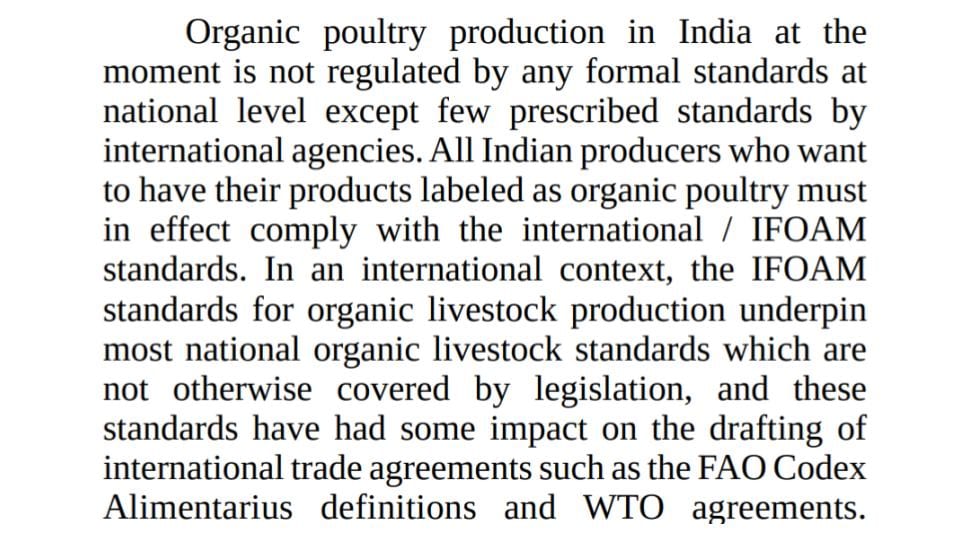
(Source: Research Gate)
Native breed specialism
“Twelve countries across the world are chosen under the project to revive the native breeds by raising backyard chicken. In India, they have identified Gujarat and Tamil Nadu.” (Source: The Weekend Leader)
Farmers like Senthilvela are effectively priming their enterprises to becoming the seed bank of native chicken breeds.
Having used their commercial cleverness to open up the market, they then look to multiply the rare stock.
This way they become the source.
Over time, transitioning from producer to contract supplier.
Having learned all the mistakes, taken the risk and paid the early adopter costs…
…farmers like Senthilvela, then become stockists who integrate downstream to start-up producers.
1st mover advantage – local recognition
“Also, professors from the Poultry Research Station from TANUVAS are working with Senthilvela’s farm conducting studies to get a GI tag for Siruvidai breed.” (Source: The Weekend Leader)
Organic chicken certification is not the only goal that Senthilvela has identified.
But also, local certification from the Geographical Indications Registry, India. A kind of intellectual property right.
Lately, this competition to become officially known as the place of origin for native breeds as taken India agribusiness by storm.
For example, Jhabua district of Madhya Pradesh achieved GI tag recognition as being the home of the Kadaknath chicken.
The tag was hotly disputed by Dantewada district of Chhattisgarh also, but Jhabua pipped them to it:
“The famous Kadaknath chicken meat from Jhabua district of Madhya Pradesh has now got a Geographical Indication (GI) tag.
The tag denotes that the product comes from a particular geographical area, and often enhances its commercial value.” (Source: India Times)
But do customers really care?
According to SMEfutures, India’s leading progressive business media brand:
“Apart from all the attention the organic market is reaping, the demand for locally sourced produce in restaurants, markets and households has surged, lately. Organic consumers want first-hand experience of what they are having, to satiate the craving of local ingredients and flavours.” (Source: SME Futures)
It is cited that the domestic, retail and hospitality food demand collectively is leaning upon the locally-sourced trend.
So, there we have it…
There is definitely a commercial value advantage for farmers like Senthilvela acquiring local authenticity rights too.
